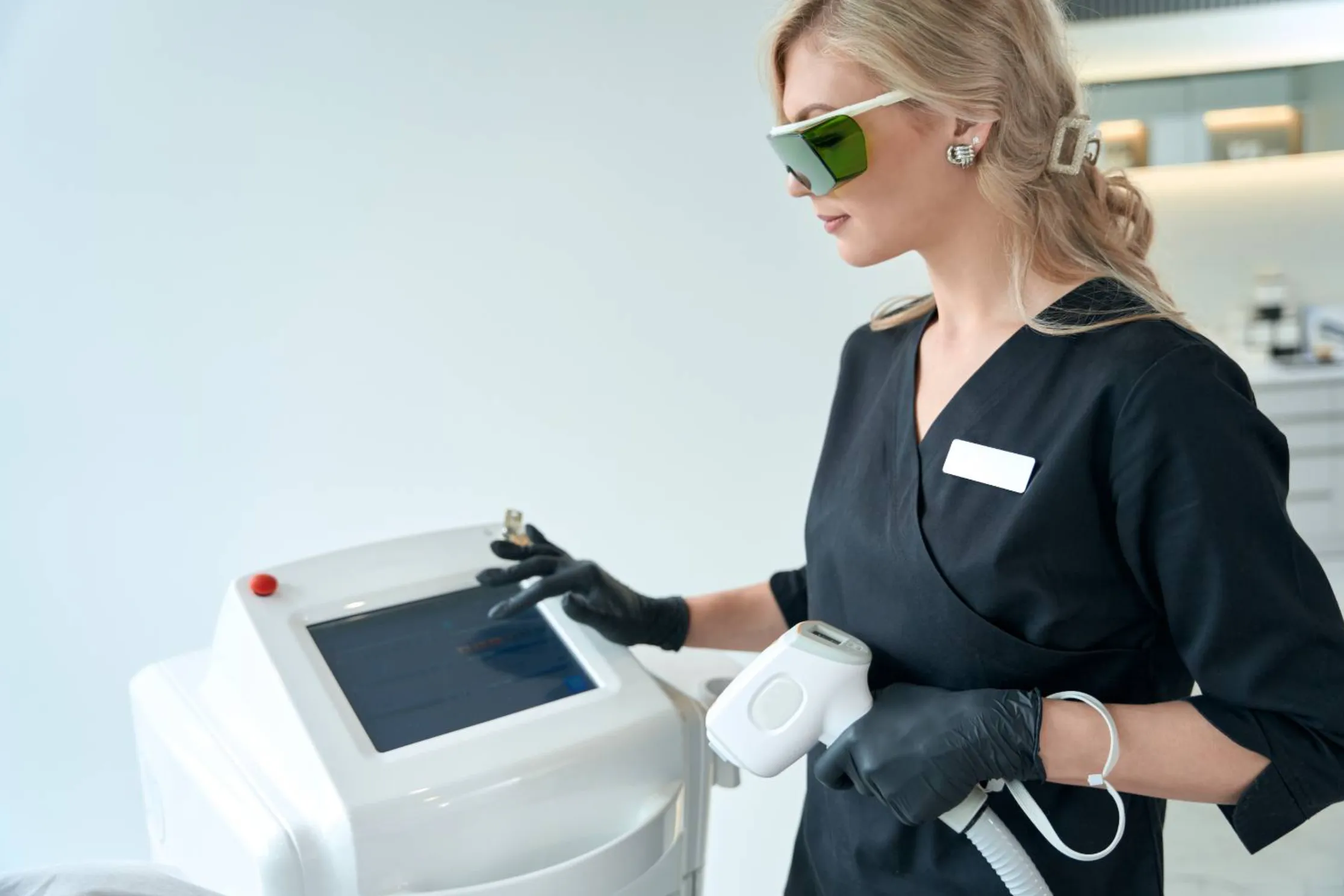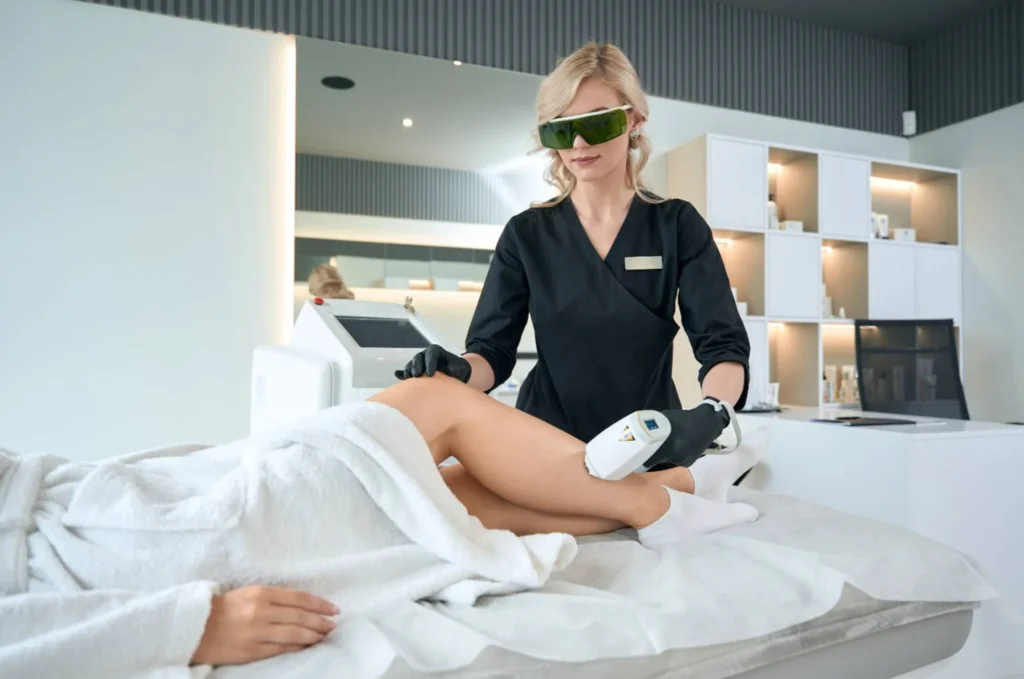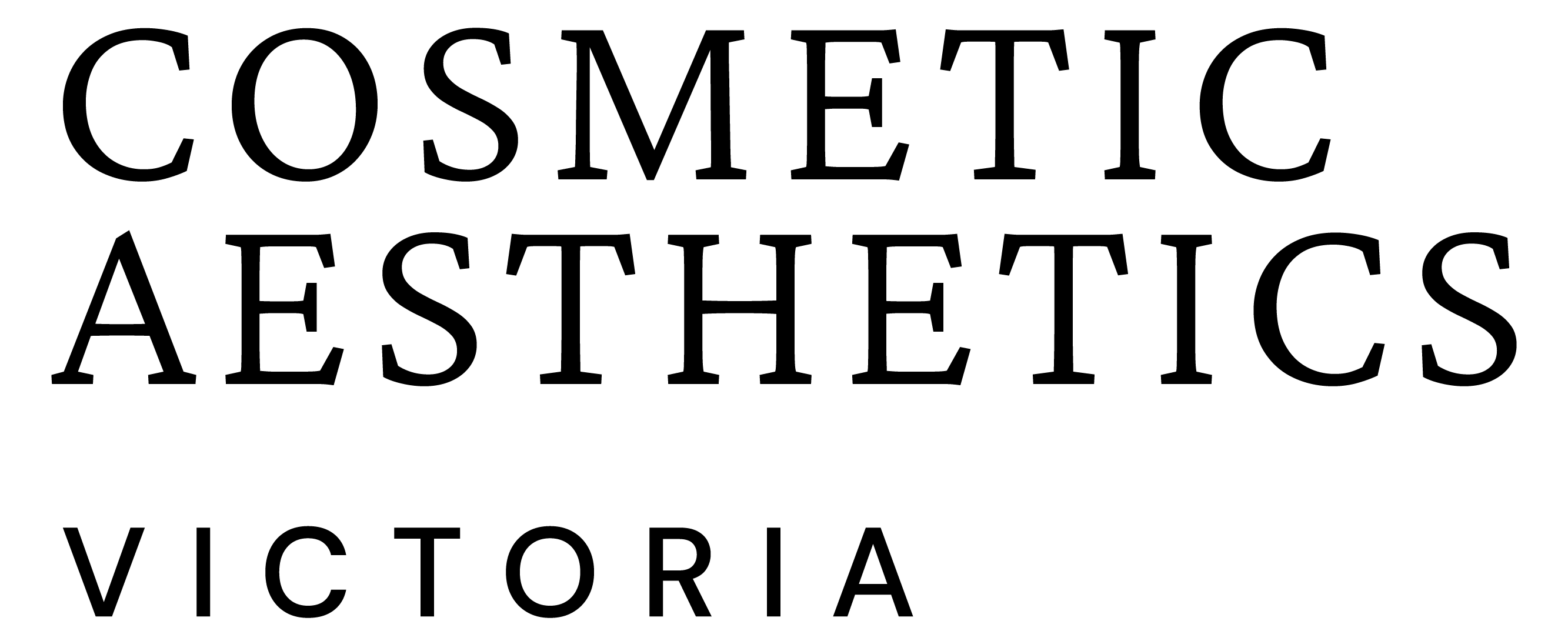
Laser Hair Removal vs. Waxing: Which is Better?
When it comes to managing unwanted body hair, we’ve all been there—deciding between the hassle of regular waxing or the investment in something more permanent like laser hair removal. It’s a choice that many of us face, and the answer isn’t always clear-cut. Having tried both methods myself, I can tell you that each comes with its own set of advantages and challenges.
In this blog, I’ll break down the key differences between laser hair removal and waxing, so you can make an informed decision that best suits your lifestyle, budget, and long-term hair removal goals.
How Laser Hair Removal And Waxing Work: The Basics Explained
When it comes to hair removal, both laser hair removal and waxing are popular methods, but they operate on entirely different principles. Each has its own set of benefits, challenges, and long-term effects, making it essential to understand how each works before making a decision.
What Is Laser Hair Removal?
Laser Hair Removal (LHR) is something I’ve seen growing in popularity over the years, and it’s not hard to see why. The concept of targeting hair at its root, destroying the follicle to stop regrowth, sounds almost too good to be true, doesn’t it? When I first tried it, I was sceptical—like many people are. But after a couple of sessions, I was hooked.
This process uses highly concentrated beams of light aimed at the melanin in your hair. The light transforms into heat, which damages the follicle, preventing it from producing new hair. It’s like the hair follicle gets a little “warning” to stop growing hair, so it listens.
What I found especially impressive was the precision of the technology. The laser is designed to selectively target the pigment in your hair, while leaving the surrounding skin relatively unaffected. If you’re someone with fair skin and dark hair (like me), LHR works particularly well. It’s most effective when there’s a clear contrast between your skin and hair, making it easier for the laser to pinpoint the hair follicles.
I’ll be honest, the first session left me with a bit of discomfort, but as the sessions went on, it became more manageable, and the results began to shine through. Now, it’s hard to imagine going back to shaving.
How Does Waxing Work?
Waxing, on the other hand, is the method I first used in my younger years when I was searching for smoother skin. I remember feeling like it was the “best thing since sliced bread” at the time. You know the drill—hot wax is spread over the skin, a cloth or paper strip is pressed over it, and in one swift motion, the hair is ripped out from the root.
It sounds painful (and it is!), but here’s the thing—waxing gives you immediate smoothness, unlike LHR, which requires multiple sessions to see results. But with waxing, the pain can sometimes outweigh the payoff. In the beginning, I found the sensation to be sharp and stinging, but I soon realised that the discomfort was only temporary. The skin calms down after a few minutes.
Waxing is also highly effective for people with all skin tones and hair colours. You don’t need to worry about hair pigmentation like you do with laser treatments. However, one major downside is the regrowth. Even after a perfect wax, you’re looking at about 3-6 weeks before you need to go through it all again. For me, it became a cycle of constant appointments, which didn’t always fit into my busy schedule.

Effectiveness And Longevity
When deciding between laser hair removal and waxing, the effectiveness and longevity of results are key factors.
Laser Hair Removal: The Long-Term Winner
When it comes to long-lasting results, laser hair removal takes the crown. Imagine this: after a few sessions, you’re looking at significant hair reduction, and in many cases, it’s permanent. I’ve experienced this first-hand; after a series of six sessions, I noticed fewer hairs growing back. And the best part? The regrowth was finer and lighter, making the occasional touch-up session a breeze.
Many people think laser hair removal is only effective on specific skin and hair types, but modern technology has made it more inclusive. While it’s still most effective on light skin and dark hair, newer lasers are designed to work on lighter or even red hair, as well as darker skin tones.
Waxing: The Temporary Solution
On the flip side, waxing provides immediate results, but that’s all they are: temporary. You’ll walk out of the salon with smooth, hair-free skin, but in just a few weeks, the hair starts growing back, and you’re back in the salon chair.
A benefit of waxing is that it can help fine-tune hair texture over time. For example, if you’ve been waxing for a while, you might notice that your hair starts growing back thinner and softer, due to the damage caused to the follicles. So, while it’s not a permanent solution like LHR, it can improve the texture of regrowth.
Pain Comparison: Laser Hair Removal Vs Waxing
Pain tolerance can play a significant role in deciding between laser hair removal and waxing. For some, the pain factor is a deal-breaker, while for others, it’s all about the long-term payoff.
Laser Hair Removal: The Sensation You Can Handle
One of the most frequent questions I get asked about laser hair removal is, “How much does it hurt?” Well, here’s my experience. The first session was a little uncomfortable, but it wasn’t nearly as bad as I had anticipated. Most people describe the sensation as a “rubber band snapping” against the skin or a “warm pinprick” feeling. Over time, I found the discomfort became more tolerable. In fact, with each session, I noticed that my pain tolerance increased as the hair thinned and the skin adapted.
The good news is that modern laser devices are equipped with cooling mechanisms. For example, many lasers now have built-in cooling devices or cooling gels applied to the skin before treatment, which reduce discomfort significantly. So, while you might feel a bit of discomfort, it’s often much more manageable than you’d think.
If you’re wondering about specific areas, like underarms or the bikini line, they do tend to hurt a little more than, say, your arms or legs. However, the pain is brief, and it doesn’t last long after the treatment ends.
Waxing: A More Intense Experience
When it comes to waxing, I don’t think I need to tell you that the pain can be a little more intense, especially if you’ve had those “oops” moments where the wax pulls more than just a few hairs. It’s a sharp, stinging pain that shoots through your body as the wax is ripped away.
I’ll never forget my first waxing experience. It was a bikini wax, and I was practically clutching the edge of the table. The sensation was definitely a bit too much for me to handle, but I knew it was part of the process. Over time, I got used to the pain, and it didn’t feel as bad as the first time. But that initial shock was no joke. The pulling sensation when the wax is removed is pretty intense, and while it’s short-lived, it’s certainly noticeable.
The pain intensity also depends on the area of your body. I found that the bikini line and underarms were the most painful spots, while areas like the legs were easier to tolerate. But waxing also comes with a price—it’s not just painful during the treatment, but sometimes after. Redness and bumps are common, and if you’re prone to ingrown hairs, waxing can make that problem worse.
Cost Breakdown: Waxing Vs Laser Hair Removal
| Aspect | Waxing | Laser Hair Removal |
| Cost per Session | $25 – $80 (varies by area) | N/A (sold as a package) |
| Typical Cost Range | Ongoing, indefinite spending | $900 – $4,800 total (based on area & sessions) |
| Frequency | Every 3–6 weeks | Initial 6–8 sessions, then yearly maintenance |
| 5-Year Cost Example | ~$5,220 (e.g., legs at $60 every 6 weeks) | ~$900–$4,800 (depending on body area) |
| Lifetime Cost Estimate | Up to ~$23,000 or more | Much lower after initial treatment |
| Maintenance | Frequent appointments required | Minimal—once-a-year touch-ups |
| Result Duration | Temporary (hair regrows between sessions) | Long-term/permanent reduction |
| Initial Investment | Low | High |
| Long-Term Cost-Effectiveness | Low—cost accumulates over time | High—saves money long term |
| Best For | Short-term or occasional hair removal needs | Long-term hair reduction with fewer ongoing expenses |

Side Effects And Risks: Waxing Vs Laser Hair Removal
Whether you’re opting for laser hair removal or waxing, it’s important to understand the potential side effects and risks associated with each method. While both are generally safe when performed correctly by a professional, there are some considerations to keep in mind.
Laser Hair Removal: Common Side Effects And Risks
| Aspect | Laser Hair Removal | Waxing |
| Common Side Effects | – Redness and swelling (temporary) – Mild irritation or itching – Sunburn-like sensation |
– Pain during the session – Redness, bumps – Ingrown hairs |
| Duration of Common Effects | 1–2 days (typically mild and manageable) | A few hours to a couple of days |
| Rare Risks | – Blistering – Scarring – Hyperpigmentation or hypopigmentation – Eye damage (face area) |
– Folliculitis (infected hair follicles) – Skin tearing – Burns (from hot wax) |
| Allergic Reactions | Rare, mostly from topical gels or prep products | Possible (especially to wax ingredients like rosin or fragrances) |
| Infection Risk | Low if treated properly, and aftercare is followed | Higher, especially in unsanitary salons or with poor aftercare |
| Skin Sensitivity Post-Treatment | Sensitive to the sun for 24–48 hours. Must avoid heat and sun exposure | Also sensitive to the sun for 24–48 hours, Sunburn risk if exposed post-treatment |
| Pain Level | Mild (tingling or heat sensation during treatment) | Moderate to high (especially in sensitive areas) |
| Minimising Risks | – Choose a licensed, experienced technician – Follow aftercare: sun protection, soothing creams |
– Use reputable, hygienic salons – Exfoliate beforehand – Avoid waxing during menstruation |
| Suitability for Sensitive Skin | Must be adjusted to skin/hair type. Can be safe with proper technician oversight | Can trigger reactions or ingrowths. Test wax if prone to allergies |
Verdict On Side Effects And Risks:
While both laser hair removal and waxing come with their risks, the long-term risks of laser hair removal are minimal if performed by a certified professional, and any side effects tend to resolve quickly. On the other hand, waxing can result in ingrown hairs, bacterial infections, and skin irritation, particularly if you don’t follow proper aftercare.
Convenience And Lifestyle: Which Method Fits Your Routine?
When it comes to hair removal, convenience is a game-changer. Whether you’re juggling a busy work schedule, active weekends, or family commitments, the method you choose can have a significant impact on your daily life. So, let’s take a closer look at how laser hair removal and waxing compare in terms of time commitment, flexibility, and lifestyle.
Laser Hair Removal: Time-Saving And Convenient In The Long Run
One of the biggest reasons I chose to switch from waxing to laser hair removal was the long-term time-saving factor. I used to spend hours each month waxing or shaving, especially in summer. I’d find myself running to the salon for a waxing appointment every few weeks, and the regrowth would be so fast that I felt like I was constantly playing catch-up.
Laser hair removal, on the other hand, changed the game. After my initial set of sessions (which took about 1 hour per session every 6-8 weeks for 3-6 sessions, depending on the area), I was done. With long-term hair reduction, I found myself spending much less time in front of the mirror worrying about hair regrowth. For example, after just a few months, I noticed 90% less hair on my legs, and now, I only need to book a touch-up appointment once a year. The time saved is invaluable, and it’s one less thing I need to worry about in my busy schedule.
With laser hair removal, shaving between sessions is perfectly fine, so if you’re someone who needs a little touch-up here and there, it’s not a problem. And the best part? You don’t have to let your hair grow out to a certain length between sessions (which is one of the more inconvenient aspects of waxing). You can enjoy smooth skin consistently without that constant back-and-forth.
Waxing: Regular Maintenance, Time Commitment
If you’re someone who enjoys instant results, waxing is a tried-and-true method that gives you smooth skin immediately. But here’s the thing: waxing requires a regular commitment to keep those results going. I’ve personally experienced this over the years—I’d wax every 4-6 weeks, depending on the area, and I quickly realised that it was taking up a lot of my time and energy.
With waxing, the hair has to grow out to a certain length (around 1/4 to 3/4 inch) to be effectively removed, which can feel inconvenient. It’s also important to note that you can’t wax every few days like you might shave. So, it’s not as flexible as other hair removal options, especially if you’ve got a busy lifestyle.
For example, I had to plan my waxing appointments well in advance, and if something popped up, I’d find myself looking for a quick fix (which often meant resorting to shaving). After a few months of this cycle, I decided I needed a more efficient solution—enter laser hair removal.
Laser Hair Removal: Perfect For An Active Lifestyle
Another huge benefit of laser hair removal is how active lifestyle-friendly it is. Whether you’re heading to the gym, hitting the beach, or enjoying a sunny outdoor activity, you can confidently wear whatever you like without worrying about stubble or irritation. Once your laser treatments are done, you don’t have to think twice about shaving, and the hassle of regular waxing sessions is a thing of the past.
For example, a few weeks ago, I went on a hiking trip. Normally, I’d have had to worry about shaving beforehand, but thanks to my laser treatments, I felt confident and hair-free the entire trip without having to give it a second thought. For athletes or anyone who’s constantly on the go, laser hair removal offers a sense of freedom and flexibility that waxing simply can’t match.
Aftercare: Laser Hair Removal Vs Waxing
Standard Aftercare For Both Methods
Whether you’re opting for laser hair removal or waxing, proper aftercare is key to achieving the best results and minimising any discomfort or side effects. I’ve had my fair share of aftercare experiences with both methods, and trust me, it makes all the difference.
After both LHR and waxing, avoiding sun exposure is a must. When I first started laser hair removal, I made the rookie mistake of not keeping my skin out of the sun. Let me tell you, sunburn on treated skin is no fun! It’s important to apply SPF 30 or higher every day, especially to the treated areas. Waxed areas are just as prone to sunburn, as waxing removes a thin layer of skin, leaving your skin more sensitive to UV rays.
Hot baths, saunas, and strenuous physical activity should also be avoided for at least 24 to 48 hours after both treatments. I learned this the hard way after a particularly intense workout session post-waxing, which left me with extra redness and irritation. It’s important to allow the skin to calm down and recover without aggravating it further.
Soothing products like aloe vera or hydrocortisone cream can be a lifesaver. After my LHR treatments, I often applied cooling gels to reduce redness and swelling. Similarly, after waxing, I found that applying aloe vera gel helped soothe the skin and promote quicker recovery.
Specific Aftercare For Laser Hair Removal
With laser hair removal, I found that the aftercare is fairly simple and manageable. Here’s what I’ve learned over time:
- Shaving Between Sessions: I was pleasantly surprised to find out that I could shave between LHR treatments. This gave me the flexibility to keep my skin smooth without worrying about how it would affect the treatment. Unlike waxing, where you can’t shave between sessions, LHR allows you to maintain your results without interrupting the treatment process.
- No Plucking or Waxing: This one’s crucial. I quickly learned that plucking or waxing between sessions can undo all the work the laser has done. Since LHR targets the hair follicle, it’s essential not to disrupt it by removing hair in any way other than shaving.
- Avoiding Harsh Exfoliants: I’ve always been a fan of exfoliating, but after LHR, it’s essential to avoid harsh exfoliants, peels, or acids on treated skin for a few days. I made sure to stick to gentle skincare products to avoid irritation.
Specific Aftercare For Waxing
When it comes to waxing, I can tell you from experience that proper aftercare can really make or break your results. I remember, after a particularly painful wax on my bikini line, I neglected aftercare, and let’s just say, it didn’t end well. Here are a few aftercare steps that have saved me many times:
- Exfoliation is Key: Exfoliating the skin before and after waxing can help prevent ingrown hairs, which I’ve struggled with over the years. I started using a gentle scrub a couple of days after my wax, and it worked wonders in keeping the skin smooth and free of bumps.
- Loose, Breathable Clothing: After waxing, my skin was always a little sensitive. To avoid further irritation, I made sure to wear loose clothing for the first day or two. Tight clothes or friction from synthetic fabrics can cause discomfort and even lead to irritation or ingrown hairs. Trust me, comfort is key!
- No Perfumed Products: I learned the hard way that applying perfumed lotions or deodorants to freshly waxed skin can cause breakouts and irritation. I always opted for soothing, fragrance-free creams to keep my skin calm and hydrated.
Having experienced both methods myself, I can confidently say that the decision between laser hair removal and waxing really depends on your goals, budget, and pain tolerance. If you’re looking for long-term results with minimal maintenance, laser hair removal is the way to go. It’s cost-effective in the long run, less painful, and requires far less time and effort than waxing.
On the other hand, if you’re looking for an immediate fix with lower upfront costs, waxing might be the better choice. Just be prepared for the frequent appointments, regrowth, and potential irritation that comes with it.
I hope this breakdown helps you weigh your options and choose the method that suits your lifestyle. Whether you opt for laser hair removal or waxing, just remember to follow the aftercare steps, and always go to a reputable professional to ensure the best results.

